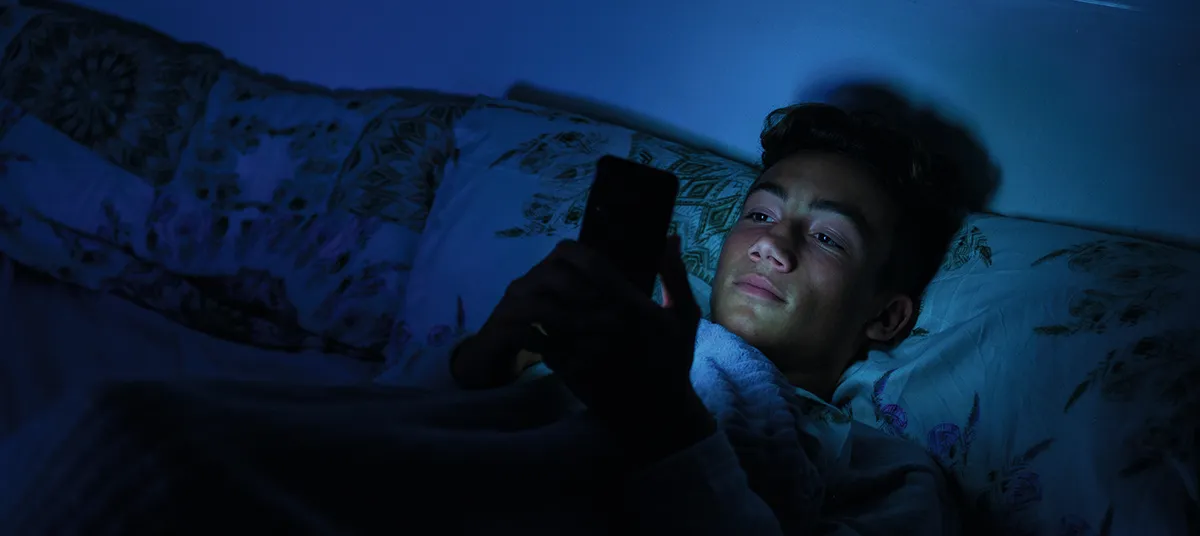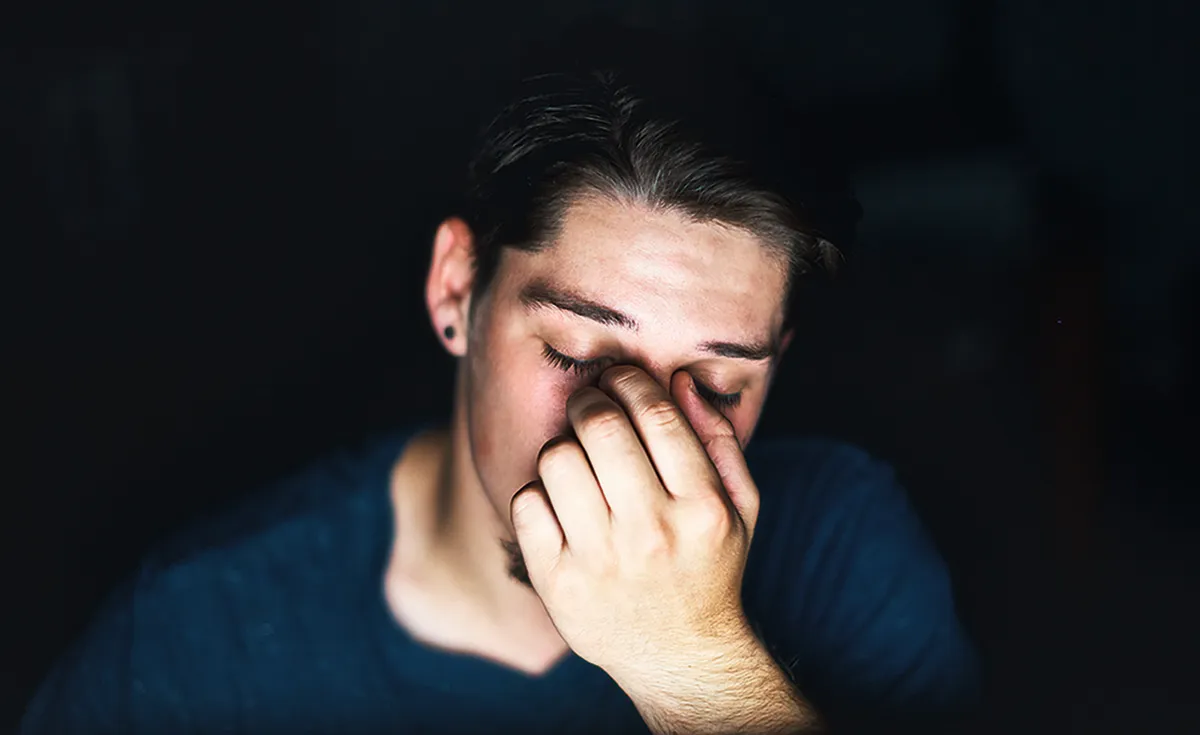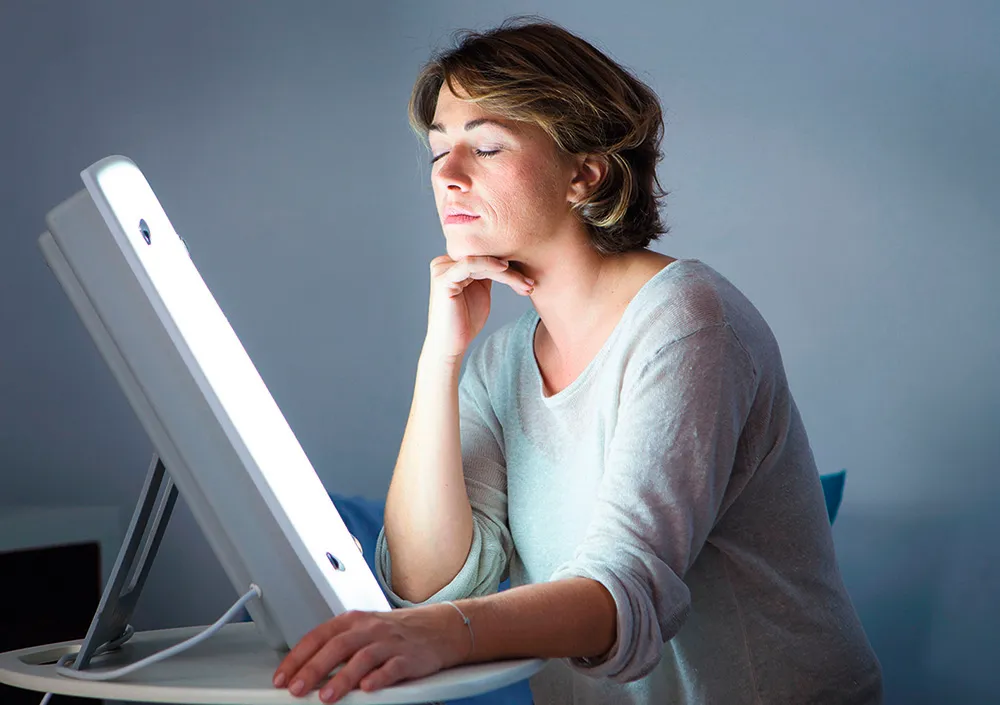What is blue light?
The Sun bathes us daily in light, which is one of many types of electromagnetic radiation, along with radio waves, microwaves and gamma rays. We can’t see the vast majority of these energy waves flowing through space, but we can measure them. The light that human eyes can see, as it bounces off objects, has wavelengths of between 380 and 700 nanometres. Within this spectrum, running from violet to red, blue light vibrates with almost the lowest wavelength (400 to 450nm) but almost the highest energy.
There couldn’t be anything more ordinary than blue light. It’s the reason the sky looks blue – because it bounces off the molecules in the Earth’s atmosphere more readily than the rest of the visible light spectrum.
Most of us weren’t particularly aware of blue light until manufacturers discovered the quality with which blue-light-heavy LED technology can produce light and colour, with supreme efficiency in both power and size – ideal for electronic lighting and smart devices. Now that these devices have become our interface with the world, many of us stare at blue light all day, and long after the Sun goes down.

Is blue light ruining my sleep?
It depends. A daytime stroll, which will expose you to significantly more blue light from the Sun than any human-made device, can help ensure you get a good night’s sleep.
Being exposed to bright sunlight helps maintain a healthy circadian rhythm, which regulates sleep and alertness, along with other biological processes such as appetite and digestion. A study published in the journal Sleep Health in 2017 found that workers exposed to more morning sunlight slept better than those that saw less light, and they also felt less depressed and stressed.
But just as not having enough daytime light can lower our sleep prospects, so can too much blue light in the evening. This is because our circadian system, which evolved when we lived largely outside with no electricity, is regulated by light cues received by our eyes.
We’ve long known that our visual photoreceptors, known as rods (for night sight) and cones (for bright light and colour) do this to some extent. But only in the 21st Century did we discover that we also have photosensitive retinal ganglion cells, which act as light meters that set our circadian responses. These are particularly sensitive to blue light. Other frequencies on the visual light spectrum can, even without blue light, trigger the circadian system (the brighter the light, the greater the effect), but not as readily.
In 2017, researchers at the University of Haifa, Israel, found that exposure to blue light in the evening, on average, reduced duration of sleep by 16 minutes. It also reduced production of melatonin, a hormone that influences the circadian rhythm.
So dim your lights in the evenings and set your gadgets to night-mode, or turn down their brightness. Sleep experts routinely advise switching off devices an hour before bed.

Can too much blue light damage my eyes?
`With the great outdoors providing by far our most extreme exposure to blue light, we’d know by now if blue light was a problem. That said, staring at low-level blue-dominant light, unblinkingly, for the majority of our waking hours, is a relatively new phenomenon, and digital eyestrain is a common complaint.
So far there’s no evidence that blue light from devices is a culprit. Computer users tend to blink five times less than usual, which could result in dry eyes. And focusing on anything for long periods without a break is a recipe for tired eyes.
You can damage a retina if you point strong blue light at it for long enough, which is why we don’t look directly at the Sun or LED torches.

Why is blue light used by some doctors?
Despite its recent bad press, blue light has medicinal applications. The lamps used to treat Seasonal Affective Disorder (SAD) concentrate blue light at its highest-energy wavelengths to mimic sunlight. One study at the Mood Disorders Clinic at the University of Utah in 2009 found that 60 per cent of participants’ depression improved after three weeks of the therapy. Blue light wakes us up, and it is thought that the therapy stimulates melatonin and serotonin production.
Blue light has also been used to effectively treat inflammatory skin conditions, such as psoriasis and atopic dermatitis. Conventional UV light therapy comes with increased risks of skin cancer and skin ageing, but studies now imply that high-energy blue light has a similar dampening effect on the skin’s immune response, reducing inflammation without the side effects.

Do blue light glasses work?
Anything that promises relief from tired eyes is sorely tempting. Glasses that block blue light promise to improve sleep, prevent eyestrain and dry eyes, and even enhance vision clarity, but the research is inconclusive.
In 2017, Boots Opticians was forced to withdraw advertising for their anti-blue-light glasses, which cost £70 and were found to filter only 20 per cent of blue light. The Advertising Standards Authority ruled that not only had Boots exaggerated the protection the glasses would provide, but also the threat of blue light from digital devices (Boots had cited retinal damage).
- This article first appeared inissue 371ofBBC Science Focus Magazine–find out how to subscribe here
About the author - Amy Fleming
Amy is a freelance writer and former Guardian staff journalist.
Read more:
- How can I get rid of the bags under my eyes?
- What is computer vision syndrome and can it make me go blind?
- Why do I always get an energy crash in the afternoon?
- Why do we rub our eyes when we’re tired?
To submit your questions email us at questions@sciencefocus.com (don't forget to include your name and location)